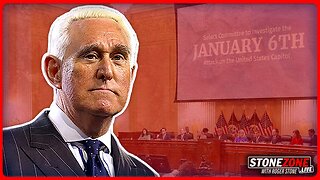Premium Only Content

NOT a Conspiracy: Frmr CIA Director John Brennon on GeoEngineering
Its REAL. Not conspiracy. John Brennan speaking at a Council on Foreign Relations in June 2016: Geopolitical Risks of Climate Geoengineering: Brennan also addressed the geopolitical implications of climate change technologies at a CFR event. He pointed out the lack of global norms governing geoengineering and stressed that unilateral actions by states could lead to international tensions, underlining the need for cooperative frameworks in addressing climate-related risks.
CIA Director John Brennan recently spoke at a Council on Foreign Relations event. His remarks covered a broad range of near and long term national security risks, including the benefits and costs of geoengineering for combating climate change (transcript and video below). It is not surprising that geoengineering solutions to climate change (which can be conducted unilaterally by states and non-state actors with international consequences), are an area of interest for the CIA director. As Brennan points out, there is a lack of “global norms and standards” for addressing the geopolitical implications of developing this technology, and that’s not a tenable situation. It’s a topic many shy away from, but ignoring it won’t make it go away.
And as CIA officers and their intelligence community colleagues work hard to protect our country from the darker side of technological change, we are mindful of how even beneficial advances can have destabilizing effects in the long run…
Another example is the array of technologies, often referred to collectively as geoengineering, that potentially could help reverse the warming effects of global climate change. One that has gained my personal attention is stratospheric aerosol injection, or SAI: a method of seeding the stratosphere with particles that can help reflect the sun’s heat in much the same way that volcanic eruptions do. An SAI program could limit global temperature increases, reducing some risks associated with higher temperatures, and providing the world economy additional time to transition from fossil fuels. This process is also relatively inexpensive. The National Research Council estimates that a fully deployed SAI program would cost about $10 billion yearly.
As promising as it may be, moving forward on SAI would also raise a number of challenges for our government and for the international community. On the technical side, greenhouse gas emission reductions would still have to accompany SAI to address other climate change effects, such as ocean acidification, because SAI alone would not remove greenhouse gases from the atmosphere. On the geopolitical side, the technology’s potential to alter weather patterns and benefit certain regions of the world at the expense of other regions could trigger sharp opposition by some nations. Others might seize on SAI’s benefits and back away from their commitment to carbon dioxide reductions. And as with other breakthrough technologies, global norms and standards are lacking to guide the deployment and implementation of SAI and other geoengineering initiatives.
full speech and interview with Charlie Rose
https://youtu.be/xpaJV018uMg
-
![GrayZone Warfare: NightOp [GAME GIVEAWAY!] - #RumbleGaming](https://1a-1791.com/video/s8/1/s/1/R/D/s1RDv.0kob-small-GrayZone-Warfare-NightOp-GA.jpg) LIVE
LIVE
LumpyPotatoX2
1 hour agoGrayZone Warfare: NightOp [GAME GIVEAWAY!] - #RumbleGaming
409 watching -
 DVR
DVR
WeAreChange
3 hours agoAliens?! Pentagon Shoots Down Iranian Mothership Drone Narrative
25.5K12 -
 LIVE
LIVE
The StoneZONE with Roger Stone
1 hour agoShould the January 6th Committee be Investigated? | The StoneZONE w/ Roger Stone
605 watching -
 44:34
44:34
PMG
2 hours ago"Caitlin Clark Says She Has “White Privilege” Why Caitlin WHY???"
27 -
 1:06:50
1:06:50
Dr. Drew
8 hours agoRoger Ver, Jan 6ers, Ross Ulbricht: Who Should Trump Pardon First? w/ Robert Barnes & Aaron Day – Ask Dr. Drew
21.6K3 -
 11:56
11:56
Tundra Tactical
2 hours ago $0.24 earnedWas the UnitedHealthcare CEO Assassination a PSYOP?
1.43K1 -
 52:46
52:46
Sarah Westall
2 hours agoPower of Nocebo and Placebo in Health & Politics. Quantum Energy Advancements w/ Ian and Philipp
6.64K3 -

LFA TV
23 hours agoLee Smith Discusses ‘Disappearing the President’ | Trumpet Daily 12.11.24 7PM EST
6.64K -
 LIVE
LIVE
2 MIKES LIVE
4 hours ago2 MIKES LIVE #154 w/ Spcieal Guests, BRIANNE DRESSEN, DAN SMERIGLIO and ADAM DERITO!
159 watching -
 1:28:46
1:28:46
Redacted News
5 hours agoBREAKING! CIA DEEP STATE PLAN TO STOP TRUMP ACCELERATES WITH FALSE FLAGS TIED TO IRAN | REDACTED
142K285